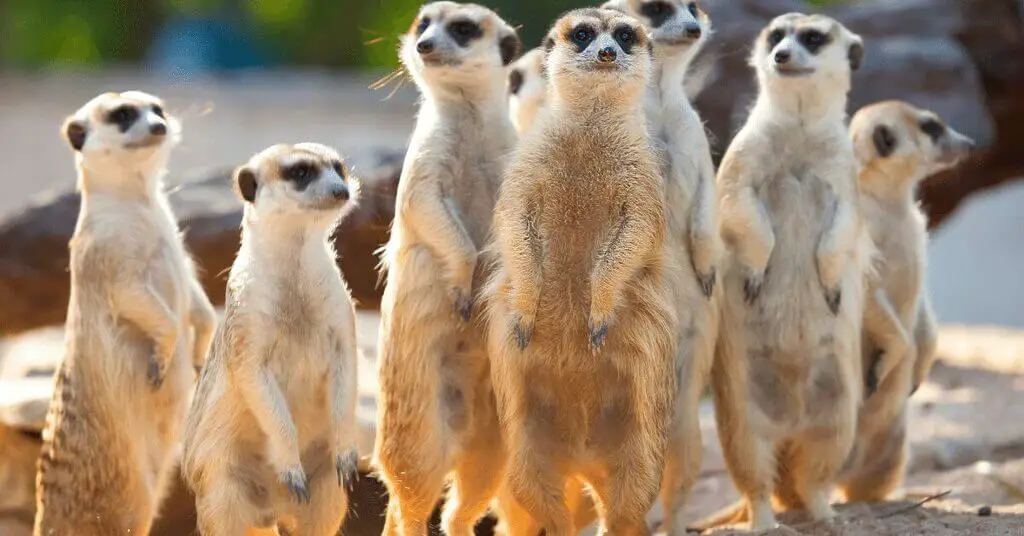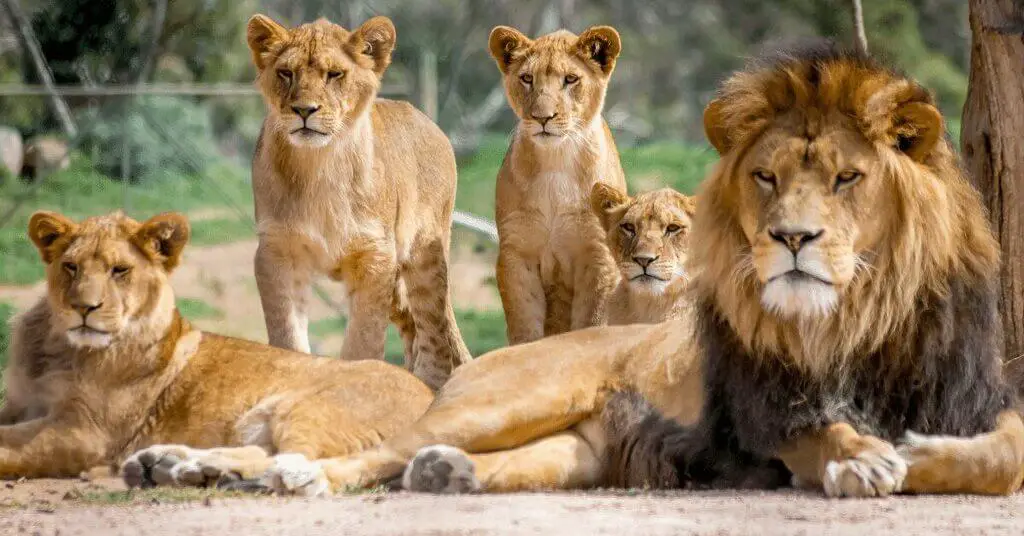The animal kingdom is filled with countless species, each with its own set of unique adaptations that help them survive and thrive in their respective environments. From cooperative behaviors to sensory adaptations, metamorphosis to thermoregulation, the diversity of animal life on Earth is truly astounding.
However, understanding these fascinating adaptations can be challenging, as the sheer variety of behaviors and characteristics can be overwhelming. Many people struggle to grasp the complexity of animal life and the reasons behind their unique adaptations.
In this article, we will explore some of the most captivating animal adaptations, providing you with a comprehensive understanding of the incredible behaviors and characteristics found in the animal kingdom. Explore echolocation, uncover the secrets of animals that transform, and discover why some animals kill for fun.
Cooperative Behaviors

Cooperative behaviors refer to the ways in which animals work together to achieve a common goal, such as finding food, defending their territory, or caring for their young.
Many animals exhibit remarkable examples of cooperation. Wolves, for instance, are known for their highly organized pack structure and coordinated hunting strategies. Honeybees work together to build and maintain their hive, with each bee playing a specific role in the colony’s success.
Meerkats, small mammals found in the deserts of southern Africa, take turns standing guard to protect the group from predators while others forage for food.
Cooperation provides numerous benefits to animals in the wild. By working together, animals can tackle challenges that would be difficult or impossible for an individual to overcome alone.
Cooperative hunting, for example, allows predators to take down larger prey, ensuring a more reliable food source for the group. Collaborating on tasks like building nests or burrows can also save time and energy, allowing animals to allocate resources more efficiently.
Moreover, cooperation helps animals protect themselves from threats. Many species, such as meerkats and prairie dogs, have developed complex alarm call systems to warn their fellow group members of impending danger. This early warning system increases the chances of survival for the entire group.
Sensory Adaptations
Echolocation is a remarkable ability that allows animals to navigate and locate objects in their environment by emitting sound waves and listening to the echoes that bounce back.
Several animals, such as bats, dolphins, and some species of whales, rely on echolocation to survive. Bats, for example, use echolocation to hunt insects in the dark, emitting high-frequency sounds that bounce off their prey and help them pinpoint its location.
Dolphins and certain whales use echolocation to navigate through murky waters, locate food, and avoid obstacles.
The advantages of echolocation are numerous. This unique sensory adaptation enables animals to navigate in low-light conditions or even complete darkness, giving them a significant advantage over other species. Echolocation also allows animals to detect objects that are far away or hidden, such as prey or potential threats.
In addition to echolocation, there are many other fascinating sensory adaptations in the animal kingdom. Some snakes, for instance, have heat-sensing organs that allow them to detect the body heat of their prey, even in complete darkness.
Elephants can pick up low-frequency vibrations through their feet, helping them communicate with other elephants over long distances.
Metamorphosis and Transformation
Metamorphosis is a biological process in which an animal undergoes a significant change in its physical form and structure during its life cycle, often accompanied by changes in behavior and habitat.
Many animals, such as butterflies, frogs, and some species of fish, undergo metamorphosis. Butterflies, for example, start their lives as caterpillars before transforming into beautiful winged adults.
Frogs begin as tadpoles, swimming in water and breathing through gills before developing legs, lungs, and the ability to live on land.
The purposes and benefits of transformation are varied and depend on the species in question. For some animals, metamorphosis allows them to adapt to different environments and take advantage of new food sources.
Caterpillars, for instance, feed on leaves, while adult butterflies drink nectar from flowers. For others, transformation is a way to escape predators or survive harsh conditions.
Metamorphosis also plays a crucial role in reproduction. Many insects, such as moths and beetles, undergo metamorphosis to develop wings and other adult features that are essential for finding mates and reproducing.
Some animals, like the mimic octopus, can even transform their appearance to blend in with their surroundings or imitate other animals to deter predators. This remarkable ability showcases the incredible adaptability of certain species and their capacity to survive in the face of adversity.
Friendly Animals

While the animal kingdom is full of fascinating adaptations and unique behaviors, it’s also home to many creatures known for their friendly and lovable nature.
These animals, often domesticated or closely associated with humans, have a special place in our hearts and homes.
When we think of friendly animals, dogs, and cats often come to mind first. Dogs, known as “man’s best friend,” have been domesticated for thousands of years and have evolved to form strong bonds with humans.
They are loyal, affectionate, and often eager to please their owners. Cats, while sometimes seen as more independent than dogs, can also be incredibly loving and affectionate towards their human companions.
Horses are another species known for their gentle and friendly nature. These majestic animals have worked alongside humans for centuries, forming close bonds with their riders and caretakers.
They are often sensitive to human emotions and can provide comfort and companionship. Many smaller animals, such as rabbits, guinea pigs, and hamsters, are also popular pets due to their cute appearance and friendly disposition.
These creatures can form strong attachments to their owners and provide a source of joy and comfort in households around the world.
Scent and Odor Production
Scent plays a vital role in animal communication, serving as a powerful tool for marking territories, attracting mates, and even warning off predators.
Many animals rely on scent to navigate their environment and interact with other members of their species. Pheromones, chemical substances released by an animal, can convey a wide range of information, such as an individual’s age, sex, and reproductive status. These scents can also trigger specific behaviors in other animals, like aggression or submission.
Some animals are notorious for their strong, often unpleasant odors. Skunks, for example, are famous for their ability to spray a potent, foul-smelling liquid from their anal glands as a defense mechanism against predators. Similarly, stink bugs release a pungent odor when threatened, which can deter potential predators.
However, not all strong odors serve a defensive purpose. Some animals, like the musk ox and the musk deer, produce strong scents that are used to attract mates. These musky odors can travel long distances, helping males and females locate each other during breeding seasons.
Other animals use scent to mark their territories, leaving behind a clear olfactory message to other members of their species. Wolves and other canids, for instance, use urine and feces to mark the boundaries of their territories, while cats may rub their faces and bodies against objects to leave behind their scent.
In some cases, strong odors can even help animals locate food sources. Turkey vultures, for example, have an exceptional sense of smell that allows them to detect the faint odor of carrion from great distances, helping them find their next meal.
Unique Sleeping Habits

Sleep is essential for all animals, but how different species sleep can vary greatly. Some animals, like horses and elephants, have the remarkable ability to sleep standing up. This adaptation allows them to react quickly to potential threats and escape if necessary.
These animals have a unique locking mechanism in their legs that enables them to maintain their upright position without falling over.
On the other hand, some animals are known for sleeping a lot. Koalas, for example, can sleep up to 20 hours a day.
This extended sleeping habit is related to their low-energy diet of eucalyptus leaves, which requires a lot of rest to digest properly. Similarly, sloths, known for their slow movement, sleep for about 15 to 18 hours a day.
The reasons behind different sleeping patterns in animals vary and are often tied to their specific adaptations and lifestyles. Nocturnal animals, like bats and owls, sleep during the day and are active at night, while diurnal animals, such as most birds and mammals, are active during the day and sleep at night.
Some animals, like dolphins and whales, have evolved the ability to sleep with only one half of their brain at a time, allowing them to maintain some level of awareness and continue swimming to the surface to breathe. This adaptation is known as unihemispheric slow-wave sleep.
Other factors influencing sleep patterns include the need to conserve energy, avoid predators, or take advantage of specific food sources. For example, many prey animals, such as rabbits and deer, tend to sleep in short bursts throughout the day and night to stay alert and avoid potential threats.
Defense Mechanisms
One of the most intriguing defense strategies employed by some animals is playing dead, also known as thanatosis.
Animals like opossums and certain species of snakes and insects will play dead when threatened by a predator.
By remaining motionless and even releasing foul-smelling substances, these animals can convince predators that they are not worth eating or that they have been dead for some time. This strategy can be surprisingly effective, as many predators avoid consuming dead or decaying prey to prevent illness.
In addition to playing dead, animals have evolved a wide range of other unique defense mechanisms. Some species, like porcupines and hedgehogs, have sharp quills or spines that deter predators from attacking.
Others, like the bombardier beetle, can release a hot, noxious spray from their abdomens to ward off threats.
Camouflage is another common defense mechanism, allowing animals to blend in with their surroundings and avoid detection. Chameleons and octopuses are masters of camouflage, able to change their color and texture to match their environment.
Some animals, like the walking stick insect, have even evolved to resemble inanimate objects like twigs or leaves.
Chemical defenses are also prevalent in the animal kingdom. Many species, such as the poison dart frog and the monarch butterfly, have evolved to produce or accumulate toxic substances in their bodies, making them unpalatable or even deadly to potential predators.
Animals That Migrate
Migration is the regular, large-scale movement of animals from one area to another, often in response to seasonal changes or the availability of food and resources.
Many animals undertake incredible migrations, some covering vast distances across continents and even oceans. Birds are perhaps the most well-known migrants, with species like the Arctic tern traveling from the Arctic to the Antarctic and back again each year, a round-trip journey of over 44,000 miles.
Whales, such as the humpback and gray whales, also make lengthy migrations between their feeding and breeding grounds.
Land animals also undertake impressive migrations. The wildebeest of East Africa, for example, travel in large herds over 1,800 miles each year in search of fresh grazing grounds. Monarch butterflies migrate from the United States and Canada to the mountain forests of Mexico, a journey spanning multiple generations.
The reasons for migration are varied and often interconnected. Many animals migrate to take advantage of seasonal food sources, such as the caribou of North America, which follow the growth of tender vegetation northward during the summer months. Others migrate to breed, like the salmon that return to their natal rivers to spawn.
Some migrations are driven by the need to escape harsh weather conditions. Many bird species, for example, migrate to warmer climates during the winter to avoid the challenges of cold temperatures and limited food availability. Similarly, some bat species migrate to caves or other sheltered areas to hibernate during the colder months.
Hunting Behaviors

Hunting is a crucial aspect of survival for many animals, but not all hunting behaviors are driven by the need for sustenance. Some animals engage in hunting activities that seem to serve other purposes, such as skill development or social bonding.
For most predators, hunting is a matter of survival. Carnivorous animals, like lions, wolves, and sharks, must hunt to obtain the energy and nutrients they need to live. These predators have evolved specialized adaptations, such as sharp teeth, powerful jaws, and keen senses, to help them locate, catch, and kill their prey efficiently.
However, some animals have been observed engaging in hunting behaviors that do not appear to be directly related to feeding.
Domestic cats, for example, often hunt and kill small animals like mice and birds, even when they are well-fed by their human caretakers. This behavior may be a result of their strong hunting instincts and the need to practice and hone their skills.
Similarly, some species of dolphins have been known to hunt and kill porpoises and other marine mammals without consuming them. This behavior has been linked to the development of hunting skills in younger dolphins, as well as a form of social bonding and display of dominance within the pod.
Another example of non-feeding-related hunting can be found in the chimpanzee, one of our closest living relatives.
Chimpanzees have been observed hunting and killing smaller monkeys, such as colobus monkeys, in what appears to be a coordinated and social activity. The meat is often shared among the group, strengthening social bonds and hierarchies.
Movement Adaptations
Many animals have evolved specialized leg structures and muscles that allow them to make incredible jumps, often many times their own body length.
Fleas, for example, are tiny insects that can jump up to 200 times their own body length. This is made possible by their powerful hind legs, which contain elastic proteins that store and release energy like a spring.
Kangaroos, another famous jumping species, can cover over 25 feet in a single bound thanks to their strong, muscular hind legs and long, powerful tails, which help them balance and steer.
The advantages of jumping are numerous and varied. For some species, like kangaroos and rabbits, jumping allows them to quickly escape from predators and navigate complex terrain. For others, like fleas and grasshoppers, jumping is a means of efficiently traveling long distances and accessing new food sources or mates.
In addition to jumping, animals have evolved a wide range of other unique locomotion adaptations. Flying squirrels, for instance, have a flap of loose skin between their front and hind legs that allows them to glide through the air for distances of up to 50 meters.
Gibbons, a type of small ape, have elongated arms and powerful shoulders that enable them to swing effortlessly through the treetops using a form of locomotion called brachiation.
Aquatic animals have also evolved specialized locomotion adaptations. The sailfish, one of the fastest fish in the ocean, can swim at speeds of up to 68 miles per hour thanks to its streamlined body shape and powerful, crescent-shaped tail fin.
Octopuses use jet propulsion to move through the water, expelling water from their mantle cavity to propel themselves forward or backward.
Even simple locomotion methods like walking and running have been fine-tuned by evolution to suit different animals’ needs. Cheetahs, for example, have long, slender legs and a flexible spine that allows them to run at speeds of up to 70 miles per hour, making them the fastest land animal on Earth.
Conclusion
The incredible variety of adaptations found in the animal kingdom is a testament to the power of evolution and the resilience of life on Earth.
From cooperative behaviors and unique senses to specialized defenses and remarkable locomotion abilities, animals have evolved an astonishing array of strategies to survive and thrive in diverse environments.
Throughout this article, we have explored some of the most fascinating examples of these adaptations, from the echolocation abilities of bats and dolphins to the transformative powers of metamorphosis.
We have also seen how animals use scent and odor for communication, protection, and reproduction and how different species have evolved unique sleeping habits to conserve energy and stay safe.
By understanding these adaptations and the complex interplay between animals and their environments, we can deepen our appreciation for the natural world and the incredible diversity of life that surrounds us.

